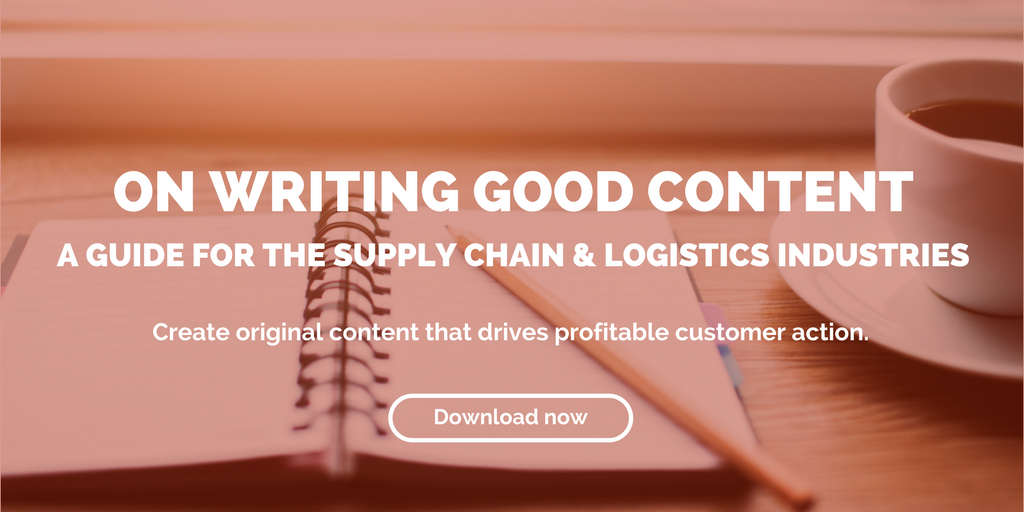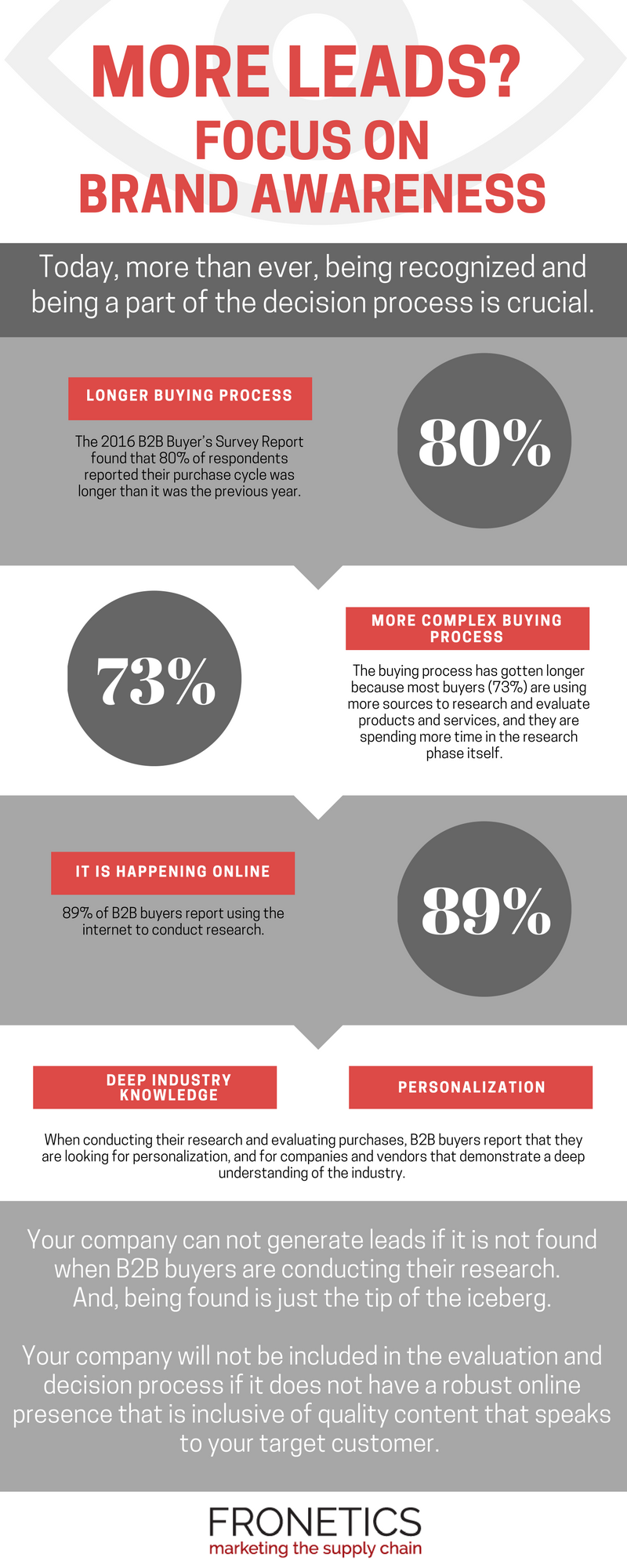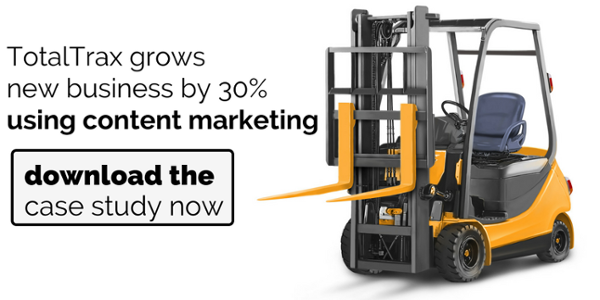
by Fronetics | Jan 24, 2017 | Blog, Content Marketing, Marketing
Long-form content generates more traffic, leads, and social shares than shorter content.
We’ve all heard the aphorism, “quantity over quality.” But when it comes to content marketing, part of quality may well be quantity.
While it can seem intimidating, the value of high-quality long-form content cannot be overstated. According to a 2012 study, long-form content converted 30% higher than shorter-form, and the same holds true today. Additionally, long-form posts generate more social media shares and have a higher average Google rank.
Here are some ideas for generating longer-form content that engages and informs your readers, and promotes your business in a meaningful way.
3 tips for creating longer-form content
1. Know your audience.
You first and foremost consideration should be your target audience. Take the temperature of your readers by frequently checking your comments sections, social metrics, and Google Analytics. It can also be useful to conduct a survey, which serves the dual purpose of directly engaging and communicating with your readers and giving you valuable information.
2. Chose relevant ideas.
Read all the articles that are on the first Google search page for your topic, and make sure your post contains relevant information you find. You should be answering as many of the questions that appear in Google Suggest at the top and bottom of the search page.
3. Write good content.
It seems painfully obvious, but it’s worth keeping quality at the top of your priority list. The idea of longer-form posts is to keep readers engaged and encourage them to peruse as much of your site as possible.
Neil Patel suggests that if you “strive to provide enormous value with every word you write,” your writing becomes more targeted. Keep posts visually accessible and easily digestible with short paragraphs, subheadings, and relevant images. Another key element of good content is research. Posts that include actual examples and case studies perform better than data-free posts.
Creating longer-form content may mean that your business needs to devote more resources to its content marketing efforts. But the benefits are well-documented and far outweigh the cost.
Related posts:


by Fronetics | Jan 9, 2017 | Blog, Content Marketing, Marketing, Social Media, Strategy, Supply Chain
Why brand awareness is important to growing your business
The singular goal of most companies that contact Fronetics is to generate more leads — today. This is not surprising in that leads are necessary to generate sales, and sales are necessary to revenue generation and to growth. What is surprising is the number of companies who do not recognize the critical role brand awareness plays in lead generation.
Brand awareness is the likelihood that your company’s brand, products, and services are recognized by consumers. Simply put, if consumers don’t know your company exists and/or don’t know what your company does or what your company offers, your company won’t be a part of their decision process.
Today, more than ever, being recognized and being a part of the decision process is crucial.
The new B2B buying process
The buying process for B2B buyers has become more complex and longer. The 2016 B2B Buyer’s Survey Report found that 80% of respondents reported their purchase cycle was longer than it was the previous year. The buying process has gotten longer because most buyers (73%) are using more sources to research and evaluate products and services, and they are spending more time in the research phase itself.
When conducting their research and evaluating purchases, B2B buyers report that they are looking for personalization, and for companies and vendors that demonstrate a deep understanding of the industry.
The place they are turning to conduct their research, and to evaluate purchases, is online: 89% of B2B buyers report using the internet to conduct research. Specifically, they are going online to: conduct web searches, look at vendor websites, read reviews, use social media, and participate in online forums.
The importance of investing in brand awareness
Your company can not generate leads if your company is not found when B2B buyers are conducting their research. And, being found is just the tip of the iceberg. Your company will not be included in the evaluation and decision process if it does not have a robust online presence that is inclusive of quality content that speaks to your target customer — that is, content that educates, informs, and identifies how your company can meet the needs of your target customers. It is about positioning your company as a knowledge leader, building trust, and establishing relationships. It is about brand awareness.
Building brand awareness takes time and dedication. Companies that are willing to invest their time and resources to brand awareness are rewarded – not just with leads, but with quality leads.
Too often, I see companies who are unwilling to invest either the time or money in brand awareness. One of the most frustrating things to see is a company that gives up too soon. These are companies who have realized significant gains — they have, for example, increased traffic to the website through organic, referral, direct, and social sources; decreased bounce rates; increased social reach; and increased social engagement. But, because their lead generation has not immediately sky rocketed, they decide to either reduce or eliminate their digital and content marketing activities. It is frustrating because these companies have built a strong foundation, and they are on the tipping point of success.
With the B2B buying process taking longer than ever, with buyers spending more time researching and evaluating their decisions, and with B2B buyers turning to the internet and critically evaluating companies on how they present themselves, investing the time and resources to brand awareness is critical.
As Geoffrey Chaucer said, “Patience is a conquering virtue.”

You may also like:

by Fronetics | Dec 14, 2016 | Blog, Content Marketing, Logistics, Marketing, Supply Chain

In 2016 88% of B2B marketers reported using content marketing to market their business, up by almost to 3% over 2015. B2B markets are increasingly using content marketing because they recognize that it an effective tool to increase brand awareness, and to attract, engage, and convert new customers. With 51% of B2B buyers relying on content research and to make B2B purchasing decisions than they did a year ago, businesses who aren’t using content marketing are missing out on opportunities that ultimately impact their bottom line.
Fronetics is a boutique marketing firm focused on the supply chain and logistics industries. We work with companies to create and execute data driven marketing strategies with the objectives of increasing brand awareness, positioning companies as thought leaders, driving meaningful engagement with prospects and customers, and helping companies to grow their business.
Every day we see the impact content marketing has on companies within the supply chain and logistics industries. One client, for example, has realized a 30% net increase in new customers since the implementation of their content marketing strategy.
We have pulled together our top 10 content marketing posts of 2016. We hope these will help you to develop and/or strengthen your content marketing strategy in the coming year.
Top 10 Content Marketing Posts of 2016
This is a guest post by Jennifer Cortez, Director, Marketing Communications, Transplace. Cortez discusses how Transplace, a North American non-asset-based provider offering manufacturers, retailers, chemical and consumer packaged goods companies the optimal blend of logistics technology and transportation management services, has used content marketing and she offers up 3 tips for creating valuable and compelling content. Read more.
We’ve pulled together 19 content marketing trends that companies within the logistics and supply chain industries should take note of. Read more.
3. How to Overcome Your Biggest Content Marketing Challenge
2016 reports produced by Content Marketing Institute and MarketingProfs, and sponsored by Brightcove outline the biggest challenges B2B and B2C companies face when implementing content marketing strategies. We discuss how you can overcome these strategies and be successful. Read more.
TotalTrax Inc., a provider of real-time vehicle, driver, and inventory tracking technologies for manufacturing and warehouse operations, worked with Fronetics to leverage content marketing to increase web traffic, generate high-quality leads, and, ultimately, grow business. Read more.
10 content marketing strategy statistics that underscore the importance of developing a clear content marketing strategy to advance your business goals. Read more.
Outsourcing content marketing can cost a fraction of what dedicating in-house resources would — and you’ll get better results. Read more.
Content marketing is one of the most effective ways to increase brand awareness, broaden your customer base, and grow your business. Yet of the 88% of B2B marketers using content marketing, only 30% feel their efforts are successful. Why do so many organizations feel they are failing? Simply put, they do not have a documented content marketing strategy in place. Read more.
Speak your boss’ language with metrics, statistics, and facts that articulate content marketing’s impact on customer acquisition and sales. Read more.
What is influencer marketing and how can supply chain companies use it to win over customers? Read more.
A blog post not only stays around longer than a print ad, it can better engage potential customers. Read more.


by Fronetics | Nov 3, 2016 | Blog, Content Marketing, Marketing, Social Media
The web search has changed the way businesses shop for products and services — and content marketing is your key to reaching them.
What’s the first thing we all do when we need a gift for Fathers’ Day, can’t think of a song lyric, or want to buy a new kitchen appliance? We Google it.
The world of B2B sales is no different. Demand Gen’s 2016 B2B Buyer’s Survey Report found that 62% of B2B buyers say that a web search was one of the first three resources they use to learn about a solution. In fact, 94% of buyers reported using online research at some point in the purchasing process.
That means businesses must be more than just conscious of their digital presence: They must actively manage their website and digital content assets to accommodate the ways buyers are conducting research.
Seeing opportunity in the new reality
In the pre-internet age, the salesperson’s role began relatively early in the buyer’s journey. Today’s average B2B buyer, however, progresses nearly 60% of the way through this process before making any sort of contact with a sales rep. That means your prospects are forming their early opinions about your business and your products based on what they find on the web.
This new reality may seem daunting, given how much of the purchase decision-making process occurs before you have the opportunity to engage with a potential client. But in reality, this changing climate offers serious opportunities for businesses to demonstrate their expertise, without turning buyers off with overt sales pitches.
Content is king/key
To make the most of the potential purchaser’s experience with your business, content is key.
A robust content marketing strategy builds brand awareness, establishes trust and rapport with prospects, and generates traffic to your website. Thoughtfully generated and curated content catches the attention of buyers and keeps them interested in your business through the time of purchase.
Specifically, 67% more leads will be generated by companies with an active blog in 2016. And content isn’t limited to your website: a vibrant social media presence helps buyers conduct their research, with 57% of consumers reporting that they are influenced to think more highly of a business after seeing positive comments online.
Again, while this new reality may seem like a challenge, it’s actually a golden opportunity for your business to put its best foot forward with potential buyers. By thoughtfully generating and curating focused, informative content, companies can guide B2B buyers through the sales process, and develop an engaged and loyal customer base.
Related posts:


by Fronetics | Oct 20, 2016 | Big Data, Blog, Data/Analytics, Logistics, Manufacturing & Distribution, Strategy, Supply Chain, Warehousing & Materials Handling
These industry leaders are leveraging insights from big data to solve business problems and drive profitable customer action.
Big data is more than just a buzzword: It’s helping companies make big-impact business decisions based on customer behaviors, purchasing patterns, and preferences.
Not all organizations have the resources to invest in big data. But for those that do, the payoff can big significant. The trick, of course, is knowing which numbers to analyze, what can be predicted, how to use big data for your particular business needs.
Let’s look at five big brands that are leveraging big data successfully to drive profitable customer action.
How 5 big brands use big data
1. Amazon
Amazon’s free same-day delivery service, Prime Now, allows Prime members to shop for over 25,000 products that can be delivered to their doorsteps within two hours. How can Amazon accurately predict the specific wants of millions of people across the country at a given time to prepare local inventory for immediate delivery? Aside from efficient warehousing and logistics, the company uses data on purchase history to optimally locate and stock its warehouses. This strategy also helps to reduce the time inventory stays in stock, diminishing working capital requirement.
2. Starbucks
Have you ever wondered how two neighborhood Starbucks locations can both stay in business? The company examines data on local traffic, demographics, and customers to determine the potential success of a new location before expanding. Starbucks can then choose to open a new store where it would be most successful, even if it’s just a few blocks from one of their other locations.
3. Walmart
In preparation for Hurricane Sandy, Walmart analyzed historical sales data before expected inclement weather and found an uptick in sales of flashlights, emergency equipment, and — to everyone’s surprise — strawberry Pop-Tarts in several locations. The company has since leveraged timely analysis of real-time data to drive business performance. As Walmart Senior Statistical Analyst Naveen Peddamail told Forbes: “If you can’t get insights until you’ve analysed your sales for a week or a month, then you’ve lost sales within that time. Our goal is always to get information to our business partners as fast as we can, so they can take action and cut down the turnaround time. It is proactive and reactive analytics.”
4. Rolls-Royce
Rolls-Royce has implemented big data processes in three key areas of their operations: design, manufacture, and after-sales support. Each design simulation for one of their jet engines, for example, generates tens of terabytes of data, which computer systems analyze to determine the viability of the design. The company’s manufacturing systems are increasingly moving toward a networked, Internet of Things (IoT) industrial environment. And after-sales support is completely changed by big-data analysis. Expert engineers continually examine real-time analysis from sensors fitted to all Rolls-Royce engines and propulsion systems to diagnose faults and mitigate issues.
5. Capital One
Big data helps Capital One determine the optimal times to send particular customers certain offers. The team analyzes demographic data and spending habits of their customers to optimize their offerings, which has increased conversion rates on their offers and generated more leads from their marketing budget.
How does your business use big data?
Related posts:









